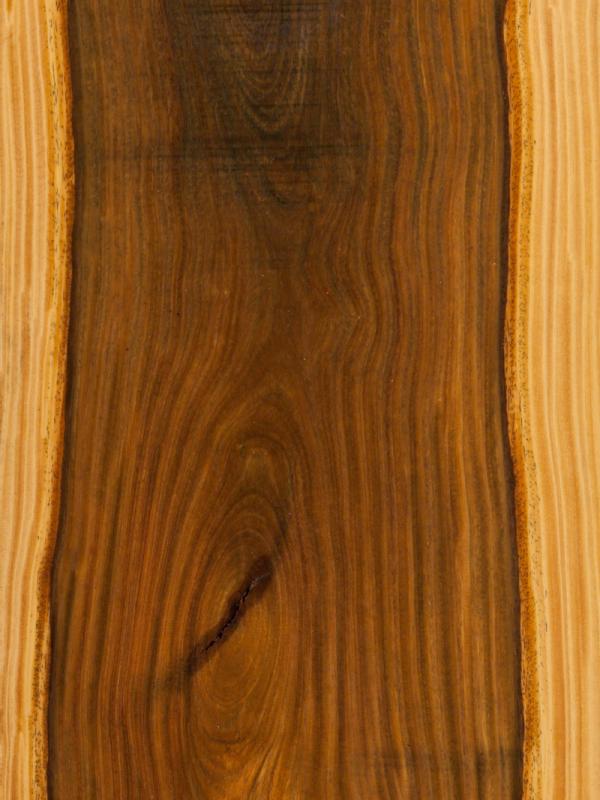
Family: Zygophyllaceae, the caltrop family.
Origin: Florida, Central America and the West Indies.
Other common names: Guaiacum wood, guayacan, ironwood and palo santo.
The tree: Lignum vitae is a small tree growing to a height of 30 feet with an average diameter of 12 in. but occasionally 18 to 30 in. Its wide, rounded crown is densely covered with dark green leaves and pale blue, five-petaled flowers making it easy to recognize. The pinnate leaves have 3 to 6 stalkless oblique or ovate leaflets. The light brown bark is smooth and mottled and peels off in thin scales.
Appearance: The heartwood is a unique dark greenish-brown to almost black color and is quite sharply demarcated from the narrow, yellow sapwood. With its natural gum resin, which is responsible for about 30% of its weight, it is very oily or waxy. It has a uniform, fine texture with a low luster.
Density: Lignum vitae is extremely heavy, one of the heaviest timbers known to commerce. Average reported specific gravity is 1.05(ovendry weight/green volume), equal to an air-dried weight of 88 pcf. Janka hardness is 4500 pounds of force.
Drying & shrinkage: Care has to be taken or serious splitting can occur. If carefully seasoned, it dries slowly with very little distortion. The wood is very stable after drying. Average reported shrinkage values (green to ovendry) are 2.5% radial and 3.8% tangential.
Working properties: The heartwood is very difficult to work with but the sapwood is much less hard and brittle. A lowered cutting edge is useful but even then the timber will try to ride over the cutters. It turns very good but due to its high resin content, sandpaper will quickly clog up. The resin is also responsible for its poor gluing properties and synthetic glues will get the best results. Pre-boring is necessary for screws and nails and they will not hold well and drilling should be done at slow speeds. Polishing is the only effective finishing treatment. Possible adverse reaction from the dust is dermatitis.
Durability: Unseasoned timbers are susceptible to attack by longhorn woodborer beetles, but once seasoned it highly resistant to both insects and fungi. The strength properties are very high and it needs no preservative treatment, even when used under the most exacting requirements.
Uses: Lignum vitae is unequaled in use as ship propeller shaft bushings and bearings and because of its self lubricating properties, it usually lasts almost 3 times as long as metal and it is able to withstand working pressure up to 2,000 psi. It is widely used as bearings in small applications such as clocks, air conditioners and fans. It is also used for rollers, casters, mallets, small wheels, band saw blocks and was once used to make bowling balls. In the early 1500’s it was introduced in Europe for medical purposes and the resin still used for treating gout and rheumatism.
Availability: Lignum vitae is usually sold in the fabricated shape for specific uses and is imported in the form of small logs and sold by the pound.